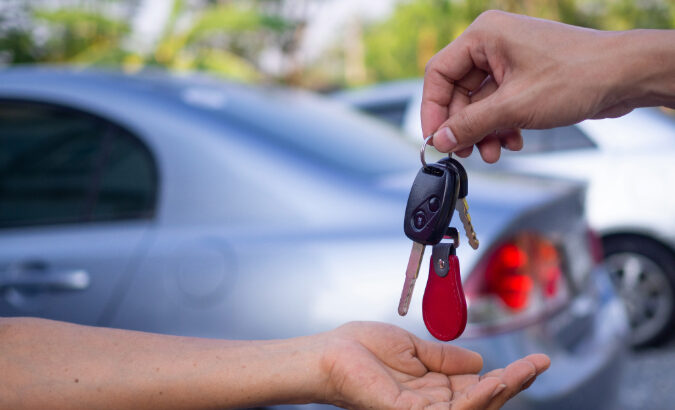
A significant number of Americans say they experience anxiety from or fear of driving. This can range from a fear of getting behind a wheel, self-driving cars, long car rides and driving altogether. If you’re feeling the same fears and anxieties, you are not alone. By understanding the causes and impacts of driving anxiety, we can begin to find ways to alleviate this widespread issue. [1]
What is driving anxiety?
If you have fearful thoughts or intense worry about driving, you may be experiencing driving anxiety. This can show up in a person’s life in many ways, from feeling a little nervous to having a full-on panic attack whenever one has to drive a certain route, a certain car, or simply drive at all.
Some common symptoms of driving anxiety include feeling restless when thinking about driving, fatigue during or after a trip in the car, trouble concentrating when behind the wheel, tension in your neck or back while driving, or having anxious dreams involving driving. [2]
What causes a fear of driving?
Because everyone experiences anxiety differently, there can be a multitude of things that can trigger your anxiety.
These triggers can include:
- Getting older
- Fear of being out of control
- Hearing loss
- Motion sickness
- PTSD from a previous car accident
- Vision issues
- Dangerous weather conditions
- Claustrophobia [3]
How to get over driving anxiety
It’s important to know that everyone suffers from driving anxiety differently, but recovery is very possible. There are strategies that can help minimize the symptoms. Implementing some behavioral interventions can help overcome driving anxiety. [2]
Identify the root cause or trigger of the fear of driving
By identifying the root cause associated with driving anxiety, one can develop the appropriate coping skills and help minimize symptoms while driving. Think about previous driving experiences that led to anxiety, specifically when it began; when it worsened; and what people, places or things were involved.
Do relatives experience driving anxiety? Was there a car accident recently that could have triggered driving anxiety? Is the anxiety always an issue, or just when driving alone, or with passengers? Answering these types of questions can make it easier to target the common cause and start solving the problem. [2]
Take a defensive driving course
One way to help driving anxiety is to take a course at a professional driving school. Some schools offer refresher or advanced courses to brush up on your skills build confidence on the road. This can help deal with inclement weather and other stressful situations while driving.
Consider cognitive behavioral therapy
A common treatment for driving anxiety is therapy. Some therapy options include cognitive behavioral therapy, exposure therapy, and systematic desensitization. Sometimes therapies can be combined using virtual reality techniques to simulate a real-life experience. [2]
Drive outside of your comfort zone
It may be helpful to start slowly, then safely working toward outside the comfort zone. For example, if driving on the highway is terrifying, start out on quiet, less-used single-lane highways. Work toward busier, multilane highways as confidence is built.
Explore relaxation techniques while driving
Help minimize driving stress with some relaxation techniques. Try deep breathing, mindful meditation, uplifting self-talk or progressive muscle relaxation to help ease the tension.
Test virtual reality exposure therapy
Virtual reality therapy has shown some success in treating driving anxiety. It’s advised to seek help of a medical professional to guide one through options such as, driving video games or driving simulations that safely test anxiety while virtually on the road. Mental health professionals can help guide and help manage symptoms along the way. [3]
It’s okay if you don’t feel comfortable driving. Relying on public transportation, friends, family, or rideshare services is okay, too, if driving brings too much stress and anxiety.
Sources:
[1] “Drive Smarter & Safer: New Driving Habits Emerge as Americans Hit the Road This Summer, According to New Data from Cobra Electronics,” prnewswire.com/news-releases/drive-smarter–safer-new-driving-habits-emerge-as-americans-hit-the-road-this-summer-according-to-new-data-from-cobra-electronics-301574208.html (Accessed January 2024)
[2] “Causes of Driving Anxiety & 9 Ways to Overcome It,” Eric Patterson and Kristen Fuller, choosingtherapy.com/driving-anxiety (Accessed January 2024)
[3] “What Is Driving Anxiety?” Debra Rose Wilson and Hilary I. Lebow, psychcentral.com/anxiety/driving-anxiety (Accessed January 2024)
Disclaimer:
The information included here is designed for informational purposes only. It is not legal, tax, financial or any other sort of advice, nor is it a substitute for such advice. The information may not apply to your specific situation. We have tried to make sure the information is accurate, but it could be outdated or even inaccurate in parts. It is the reader’s responsibility to comply with any applicable local, state or federal regulations. Nationwide Mutual Insurance Company, its affiliates and their employees make no warranties about the information nor guarantee of results, and they assume no liability in connection with the information provided. Nationwide and the Nationwide N and Eagle are service marks of Nationwide Mutual Insurance Company. © 2024 Nationwide



